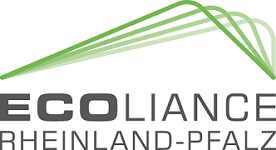Research - development - application technology "Know-how transfer for Africa" project
Clay building materials for Rwanda
In 2022, Mr Eider launched the "Know-how transfer for Africa" project. The aim of the project is to adapt earth building technology, which is traditionally used in large parts of Africa, to the state of the art. This is done by developing the building material clay from local clay pits into a finished product. The building material is used in renovation and new construction (also with the hybrid construction method already described in other articles). Mr Benjamin Mbarutso from Rwanda has been part of this project since July 2023. At eiwa Lehm, he is gaining expertise in bricklaying, plastering and colour technology. He is being given the know-how to be able to produce and process clay as a finished product in his home country of Rwanda.
Projektteilnehmer B. Mbarutso aus Ruanda
Today, clay building materials are categorised according to binding strength, pressure and tensile strength in order to achieve high quality in house construction. As the composition of the clay in the clay deposits can vary greatly from metre to metre, the greatest challenge is to develop a building material of consistently high quality from the extracted clay. In its traditional form, clay processing is a very time-consuming and physically demanding task, which is why it is increasingly being pushed into the background.
In collaboration with Mr Eider and Mr Mbarutso, existing clay pits in Rwanda are to be examined for their suitability for the manufacture of a range of finished products. The aim is to adapt the long-established use of clay to modern requirements and the current state of the art and to enable its use on the building site with beaters, concrete mixers and plastering machines. With the materials produced in-house, a model training centre is to be created to train other workers in bricklaying and plastering techniques using these products. In this way, clay, with its outstanding properties as a building material, would retain its important role. Clay is CO2-neutral and, as its components can be recycled by simple means and reused as a building material, it is sustainable.
W. Eider: Forschung-Entwicklung-Anwendungstechnik
Mr Eider has gained extensive experience in the field of research, development and application technology since 1987 and has been producing clay building materials as a finished product in Germany since 1991.
With the necessary expertise, earth building materials can be adapted to meet today's requirements on building sites all over the world. This results in significant savings in transport costs and energy consumption. The latter not only in the production of building materials. Thanks to its indoor climate advantages of keeping the house cool in summer and warm in winter, considerable savings can be made on energy costs for heating and air conditioning.
This is the task for Rwanda and other African and Latin American countries.
